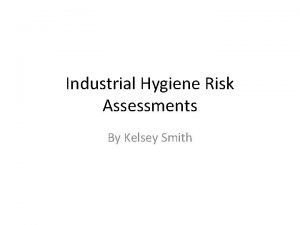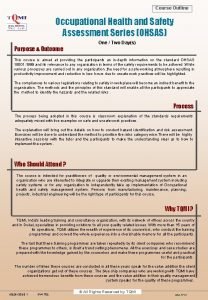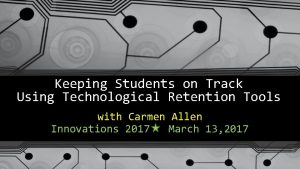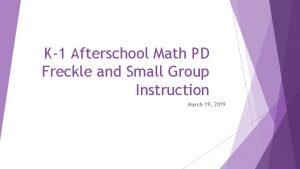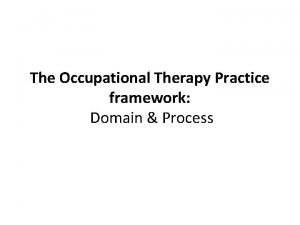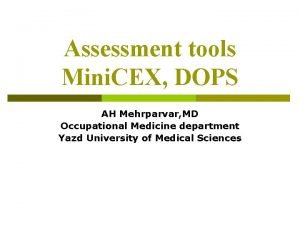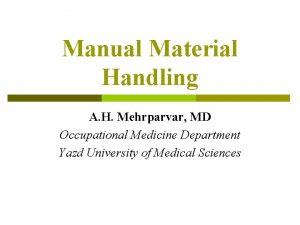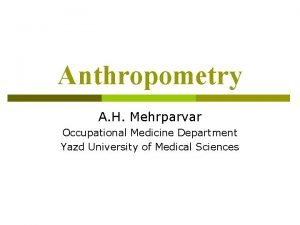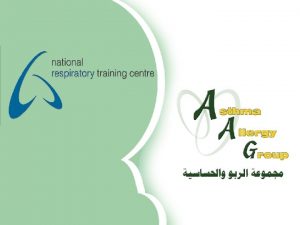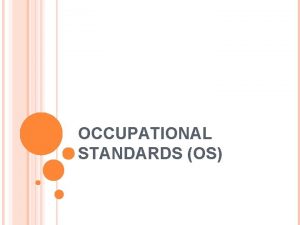Student assessment Assessment tools AH Mehrparvar MD Occupational
















- Slides: 16

Student assessment Assessment tools AH Mehrparvar, MD Occupational Medicine department Yazd University of Medical Sciences

Assessment tools Portfolio p Log book p OSCE p Mini CEX p DOPS p 360 degrees p

Portfolios Powerpoint Templates

Introduction Ø Portfolio assessments require the accumulation of evidence gathered over time

Characteristics of Portfolio Assessments Ø Portfolio assessments: purposeful, organized collection of student work that can be used to describe efforts, progress, or achievement • The idea of the academic portfolio is derived from an artist’s or writer’s portfolio • Provide a means for students to show what they can really do; they are considered to be based on the “real world” • Student performances or products are compiled in an effort to show accomplishments or improvement over time

Characteristics of Portfolio Assessments Ø Portfolio assessments (continued) • Are not simply composed of random work samples, nor is everything included; they represent a purposeful collection of work ü students must be included in the process ü criteria for selection of work must be identified ü criteria for judging value of work must be developed ü evidence of student reflection must exist

Characteristics of Portfolio Assessments Ø Portfolio assessments (continued) • Teachers provide guidelines and work collaboratively with students to identify goals of the portfolio and work samples to be included • Both teacher and student have continuous access to its contents (much more student-centered than other forms of classroom assessment) • Can be adapted to meet individual instructional needs (each portfolio is treated individually)

Characteristics of Portfolio Assessments Ø Portfolio assessments (continued) • • • Different from other forms of assessment, portfolios tend to focus on student achievements, not mistakes Portfolios accentuate student strengths Can be an extremely time-consuming endeavor ü The review process (continual examination of portfolio along with meetings with individual students)

Characteristics of Portfolio Assessments Ø Portfolio assessments (continued) • Three main features of any form of portfolio assessment: ü collection of student work must have a specific purpose ü students must be actively involved in the process of selecting work to be included ü students must actively engage in self-reflection

Uses of Portfolios Ø Ø Documentation Portfolios • Purpose is to provide an ongoing record of student progress. • Emphasis is on accumulation of evidence (e. g. , effort, progress, achievement). • Focus is holistic. Showcase Portfolios • Purpose is to highlight and display accomplishments. • Include student’s best or favorite work. • Samples should demonstrate highest levels of achievement. • Student reflection is key in this type of portfolio.

Uses of Portfolios Ø Other Variations • Class Portfolio ü Summary document used to illustrate accomplishments of an entire class. ü No student reflections included. ü Used to report to parents and administrators. • Evaluation Portfolio ü Used exclusively to report to the general public or government agencies (a result of grant projects, curriculum projects, etc. ).

Creating Portfolios Ø Issues in the Creation of Portfolios • Teachers must be clear about the purpose of portfolios. ü Can dictate which type of portfolio is used. • Criteria to be used to assess work samples must be specified. • Work samples must parallel instructional objectives and instruction that occurred. • Logistical decisions regarding storage of portfolios. • Time frame for review should be specified at outset. • Consider providing assistance with student reflections. • Care must be taken when scoring portfolios.

Creating Portfolios Ø Steps to Guide the Development of Portfolios Creating Portfolios: Step-by-Step Procedure Step 1: Step 2: Step 3: Step 4: Step 5: Step 6: Step 7: Step 8: Determine the purpose to be served by the portfolio. Identify the content, concepts, and skills to be assessed. Identify the approach to organization. Plan for an efficient review process by developing a time frame. Specify how and when students will be involved. Develop scoring rubrics. Arrange for multiple reviewers to improve reliability. Plan for the final conference.

Creating Portfolios Ø Decisions on Content • In most situations, students hold primary responsibility for selecting the content of portfolios (often in collaboration with the teacher). • However, the teacher must make clear the specific criteria to be met by the samples. • No real limit to what can be included in a portfolio. ü There must be alignment between goals, objectives for instruction, and the student products that serve as the basis for assessment.

Validity and Reliability of Portfolio Assessments Ø Validity • Important concerns: ü Specific student capabilities to be represented by samples must be determined in advance. ü Selected works must represent the entire domain of the subject area. ü Scoring rubric must match the work included in the portfolio. Ø Reliability • Consistency is interpreted as interrater agreement. • Multiple raters of a sample of portfolios can facilitate this. • Since reliability tends to be low, portfolios should not be used as sole means of assessing student performance.

Advantages and Limitations of Portfolio Assessments Ø Ø Advantages • Substantial involvement of students in the process. • Can show student growth over time, as opposed to single “snapshot. ” • Foster communication between teachers and students. • Require a shift in roles for teachers and students. Limitations • Time-intensive. • Labor-intensive. • Logistical issues of storage. • Weaknesses with respect to validity and reliability.
 Occupational hygiene risk assessment
Occupational hygiene risk assessment Occupational health and safety course outline
Occupational health and safety course outline Cutting tools in sewing with pictures and meaning
Cutting tools in sewing with pictures and meaning Student retention tools
Student retention tools Were you at the beach last weekend
Were you at the beach last weekend We ...... a big piece of wood last saturday. (see)
We ...... a big piece of wood last saturday. (see) National clearinghouse student tracker
National clearinghouse student tracker Class maths student student1 class student string name
Class maths student student1 class student string name National student clearinghouse student tracker
National student clearinghouse student tracker Student freckle. com
Student freckle. com Good morning, students
Good morning, students Student learning space login
Student learning space login Occupational dances example
Occupational dances example Occupational therapy cleveland state
Occupational therapy cleveland state The short child occupational profile
The short child occupational profile Peo framework occupational therapy
Peo framework occupational therapy Occupational therapy practice framework
Occupational therapy practice framework
